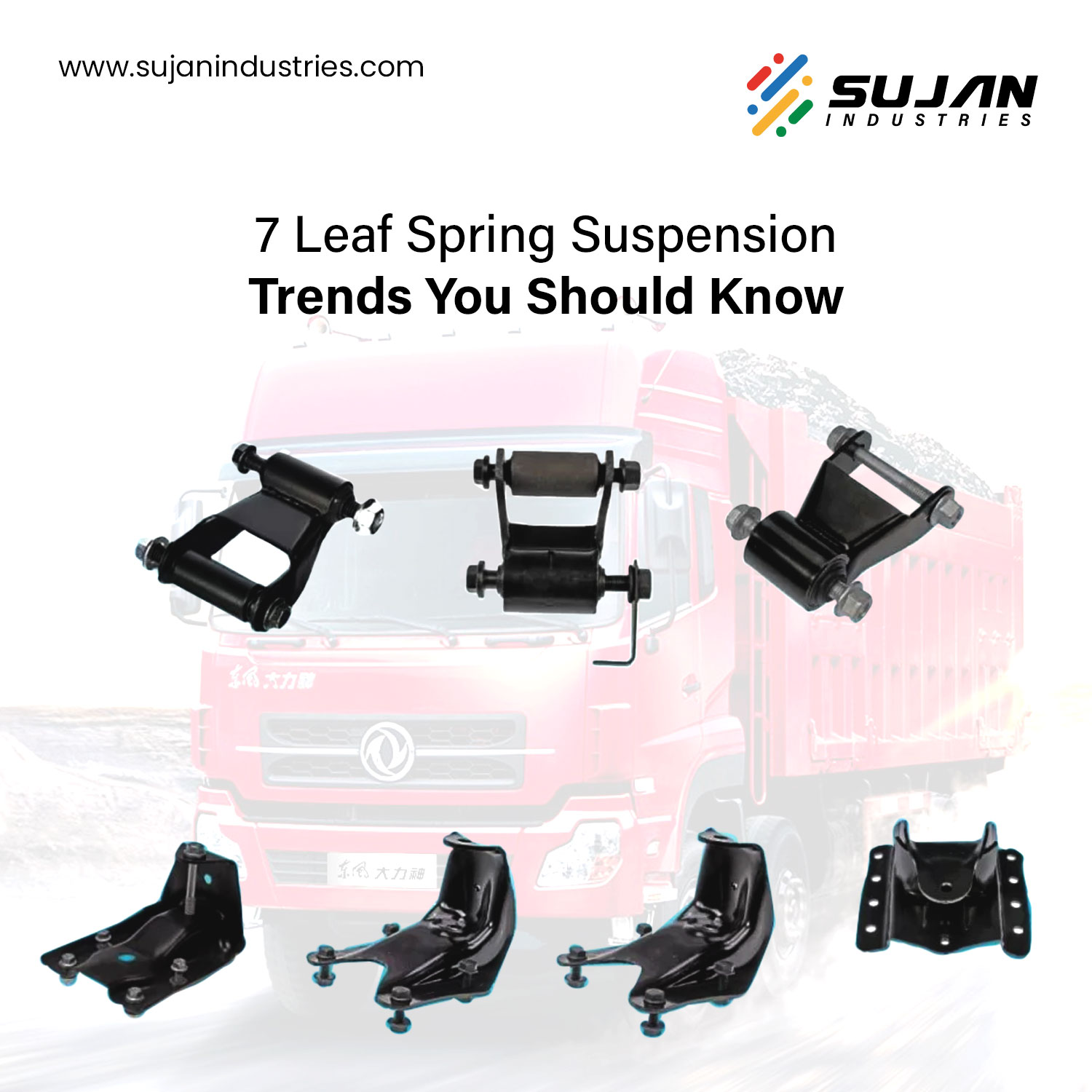
When it comes to heavy-duty performance, many vehicle manufacturers still rely on an old faithful leaf spring suspension. But as demands for efficiency, weight reduction, and ride comfort increase, sticking with the same old tech just won’t cut it.
Fleet operators, commercial vehicle makers, and even EV manufacturers are now under pressure to innovate.
The challenge? Balancing strength, cost, and performance in suspension systems. Leaf springs, often underestimated, are seeing a renaissance – thanks to breakthroughs in materials, smarter systems, and cross-industry applications.
In this blog, we’ll discuss the top 7 leaf spring suspension trends reshaping automotive dynamics and explore how they tie into larger industry goals.
Traditional steel has had a good run, but times are changing. One of the most noticeable shifts in leaf spring suspension comes from material innovation. Today, composite materials like carbon fibre, fibreglass, and aramid blends are taking the front.
These materials are lightweight, resist corrosion, last longer under fatigue, and allow more flexible engineering for performance-specific applications.
What does this mean on the road? Better load distribution, reduced wear, and improved vehicle agility. It’s no wonder automotive rubber parts manufacturers in India are ramping up their composite game to meet this rising demand.
You’ve heard of smart cars, but now it’s about active suspension too. With sensors and actuators and control algorithms being integrated into leaf spring suspension systems, vehicles can now adapt in real time to terrain changes, load shifts, and driving condition.
These intelligent systems reduce roll, improve shock absorption, enhance traction and survive the bumps. And in that equation, elements like the suspension strut mount become critical points for dynamic feedback and control.
For commercial fleets, this means less wear and tear, improved cargo safety, and smoother rides – that’s an all-around win.
Modern-day suspension isn’t one-size-fits-all. That’s why parabolic and multileaf designs are gaining popularity. Parabolic leaf springs taper in thickness from the center outwards, reducing internal friction and ensuring a smoother ride.
Meanwhile, multileaf springs with varying stiffness levels cater to both lightweight and heavy-duty applications. Think SUVs, light trucks, and even high-performance off-roaders.
Together, they strike the perfect balance between comfort and structural integrity, making them a preferred choice for OEMs and aftermarket parts suppliers, including automotive rubber parts manufacturers in India who are constantly innovating to meet niche demand.
Fuel efficiency isn’t just about engines anymore. Aerodynamics is playing a bigger role, even in suspension systems. Engineers are now rethinking the shapes of leaf springs to reduce drag, especially in long-haul trucks and trailers.
Slimmer profiles, reduced cross-sectional areas, and optimized leaf spring shackle positioning are helping minimize wind resistance.
The result? Lower fuel consumption and better CO₂ ratings, all without compromising strength.
And even minor changes in spring geometry can yield measurable gains on the highway. In a world where every liter of diesel saved counts, this trend is picking up rapidly.
If it hums, thuds, or creaks – it’s not cutting-edge in current times. NVH control is now a top priority in leaf spring suspension development. Manufacturers are experimenting with high-damping rubber components, better suspension strut mount engineering, and smarter bushing placements.
The goal? Keep road noise out of the cabin and vibration away from the chassis. Particularly in luxury pickups, delivery vans, and last-mile EVs, where ride quality can directly influence brand perception.
Leading automotive rubber parts manufacturers in India, like Sujan Industries, are now offering fine-tuned rubber products that absorb shocks without adding weight.
In automotive design, every kilogram matters. That’s why composite leaf spring suspension solutions are gaining ground. These advanced polymer-based alternatives are designed to outperform at half the weight.
From leaf spring shackles made with high-tensile synthetics to full carbon-fibre spring assemblies, this trend supports both performance and sustainability goals. EV manufacturers benefit directly, as lighter suspensions free up capacity for battery packs, boosting both range and efficiency.
This shift is also fueling a parallel boom in supply chain innovation across lightweight component segments.
Leaf spring suspension is no longer confined to just road vehicles. The rail industry, especially for freight wagons and light metro coaches, is turning back to leaf springs for their load-bearing simplicity and long lifecycle.
Why? They’re robust, easy to maintain, and cost-effective. With smarter materials and tailored damping tech, leaf springs are being adapted to absorb track-induced vibrations while maintaining stability at high speeds.
This cross-industry adoption is also inspiring new research collaborations between automotive giants and automotive rubber parts manufacturers in India, opening doors to more hybrid innovations.
Today, leaf spring suspension systems are thriving through reinvention. From smart sensors and lightweight composites to parabolic designs and aerodynamic tweaks, the transformation is full swing.
For OEMs, component suppliers, and aftermarket service providers, these trends offer both a challenge and an opportunity to upgrade legacy systems without losing their inherent strengths.
And with automotive rubber parts manufacturers in India leading the charge in NVH innovation and material advancements, the future of leaf spring shackles, mounts, and related components is looking smarter, lighter, and sharper than ever.
Whether you’re in commercial transport, EV manufacturing, or even rail engineering, understanding these trends could be the key to unlocking better performance and longer-lasting reliability on every journey.